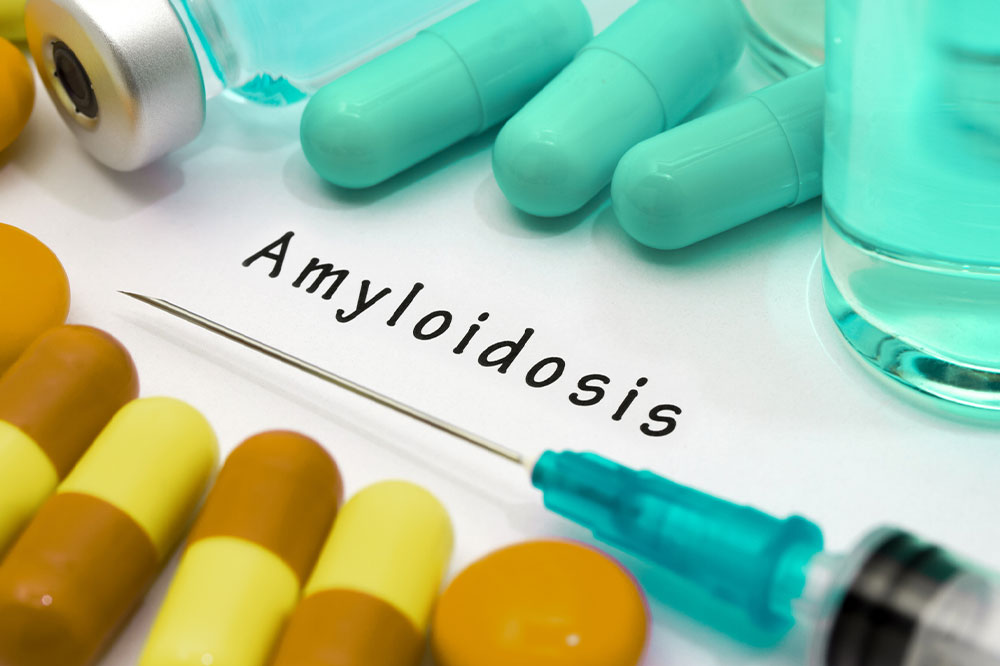
Amyloidosis – Signs, causes, and management
Amyloidosis is a rare condition that occurs when a protein called amyloid builds up in specific organs, affecting their performance. The organs typically affected are the spleen, liver, kidneys, digestive tract, and nervous system. Some kinds of amyloidosis may occur with other diseases and improve as the underlying cause is treated. However, a few types result in life-threatening organ failure. Here, we discuss the symptoms, causes, and treatment options for amyloidosis.
Signs and symptoms
The signs associated with amyloidosis are:
Extreme fatigue or weakness
Swelling in the abdomen, legs, ankles, or feet
Numbness, pain, or tingling in the hands or feet
Easily bruised skin
Purple spots or bruise-like patches around the eyes
Excessive bleeding following an injury
An enlarged tongue
Difficulty breathing or shortness of breath
As the disease progresses, the amyloid deposits can harm the kidneys, spleen, liver, nerves, brain, heart, or digestive tract. If the kidneys are affected, it can result in excessive protein in the urine. Moreover, if the amyloid deposits affect the kidney filters, one might experience kidney failure or swelling.
Causes
Amyloidosis occurs when misshaped amyloid protein clumps land on specific tissues and organs. Researchers have identified over 30 amyloid proteins, two common examples being:
Amyloid transthyretin protein or TRR protein (ATRR)
One can get this type of amyloidosis by inheriting genetic mutations that increase the instability of TTR proteins, making them more prone to forming amyloid fibrils. Another way to develop ATTR amyloidosis is through the natural aging process. The normal TTR protein becomes unstable with age, adopting abnormal structures and forming fibrils.
Amyloid serum A protein (AA)
An inflammatory illness is usually responsible for this type of amyloidosis.
Sometimes, amyloidosis occurs because of an underlying condition. Approximately 12 to 15 percent of people with amyloid light chain (AL) also suffer from a blood disorder called multiple myeloma. Multiple myeloma occurs when abnormal plasma cells grow in the bone marrow and divide uncontrollably.
Who is at risk?
Typically, anyone can develop amyloidosis, but certain factors aggravate the risk. For instance, while both males and females can be affected, approximately 60 percent of patients are males. The other risk factors include
Age
Amyloid light chain (AL), the most prevalent amyloidosis, is usually diagnosed when people turn 50 or older.
Familial link
Amyloidosis of the hereditary type is passed down through generations within families.
Ethnicity
African Americans are more susceptible to hereditary amyloidosis than people of other races.
Kidney health
People with damaged kidneys who require dialysis are more susceptible as dialysis cannot remove big proteins from the blood as effectively as healthy kidneys can.
Poor health
Those with inflammatory diseases or infections are susceptible to developing AA amyloidosis.
Treatment and management
Ideally, healthcare providers manage the condition by treating the organ damage and the underlying causes. For instance, if abnormal plasma cells are responsible for AL amyloidosis, the doctor will likely advise chemotherapy to kill the unhealthy plasma cells. Other common amyloidosis treatments include:
Organ transplantation
The healthcare expert might recommend heart, liver, or kidney transplantation to cure some kinds of hereditary amyloidosis.
Targeted therapy
It is a treatment that targets specific genes, proteins, or tissues causing amyloidosis.
Stem cell or bone marrow transplantation
Healthcare professionals remove one’s stem cells from their blood and then administer chemotherapy to kill the abnormal cells in their bone marrow. Next, the stem cells are infused back into the patient’s body.




